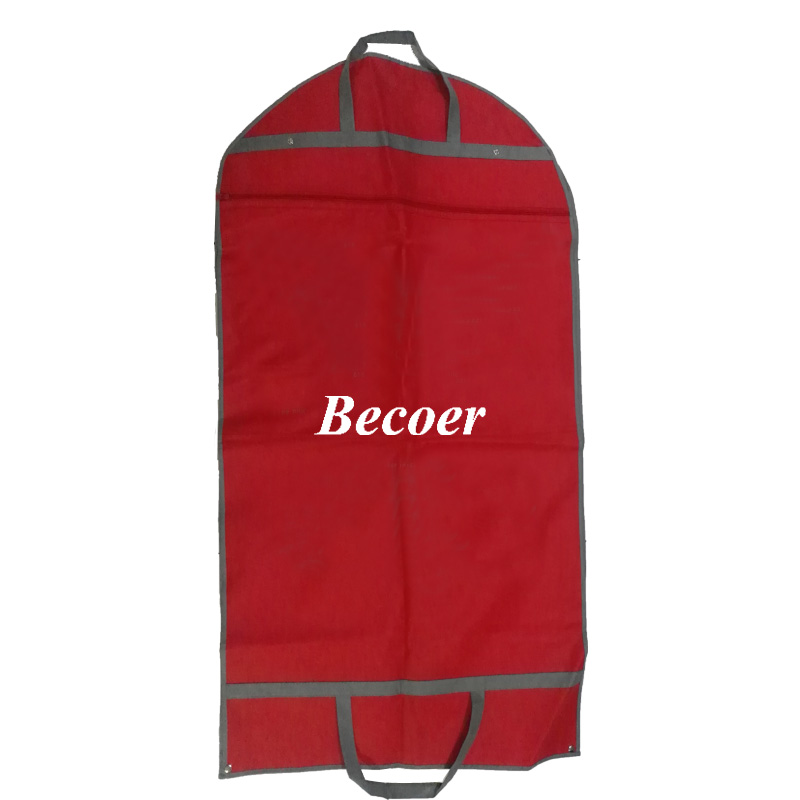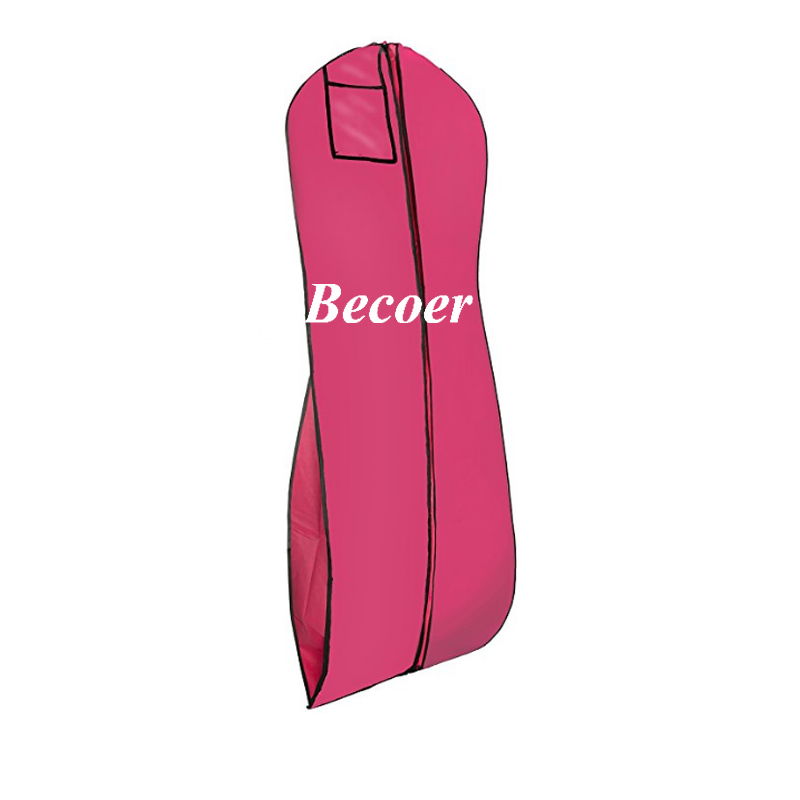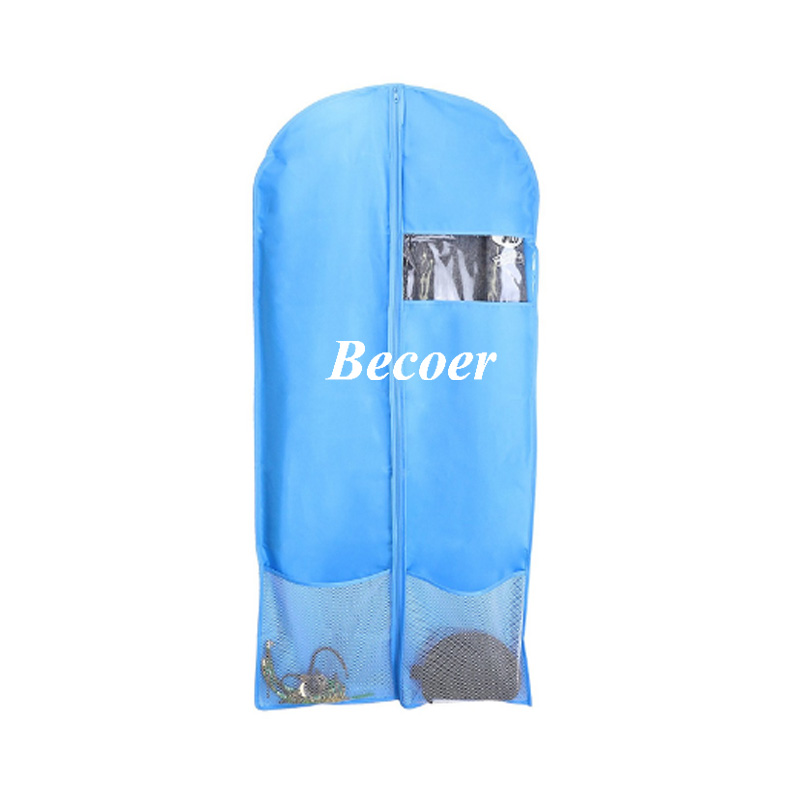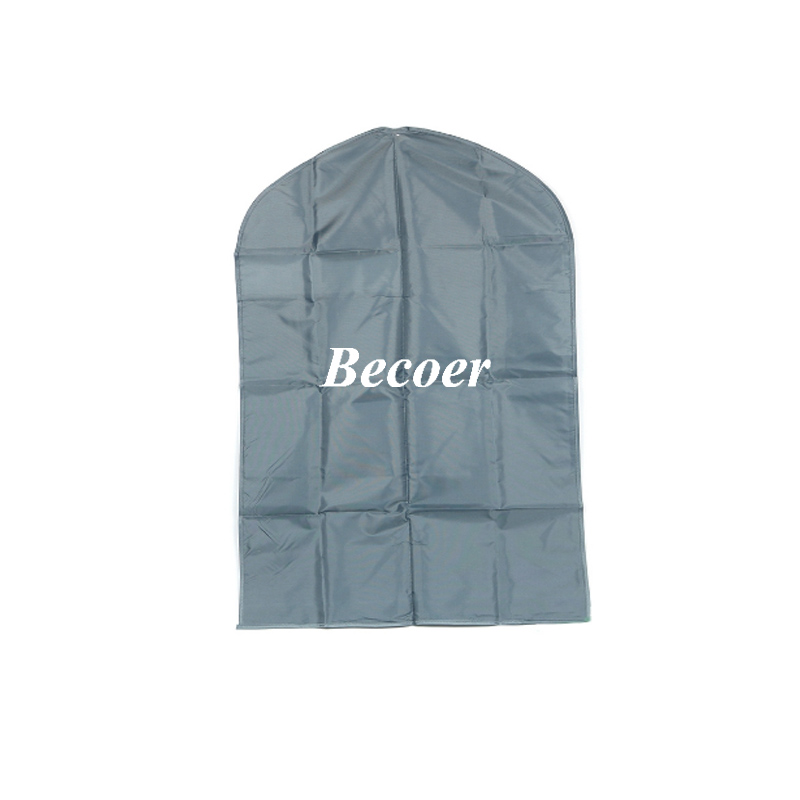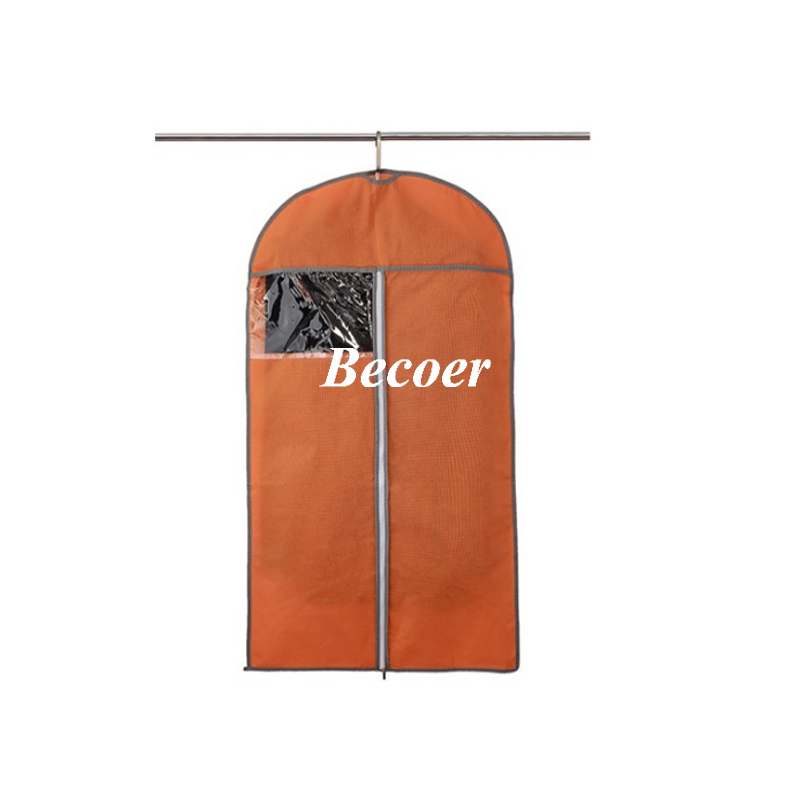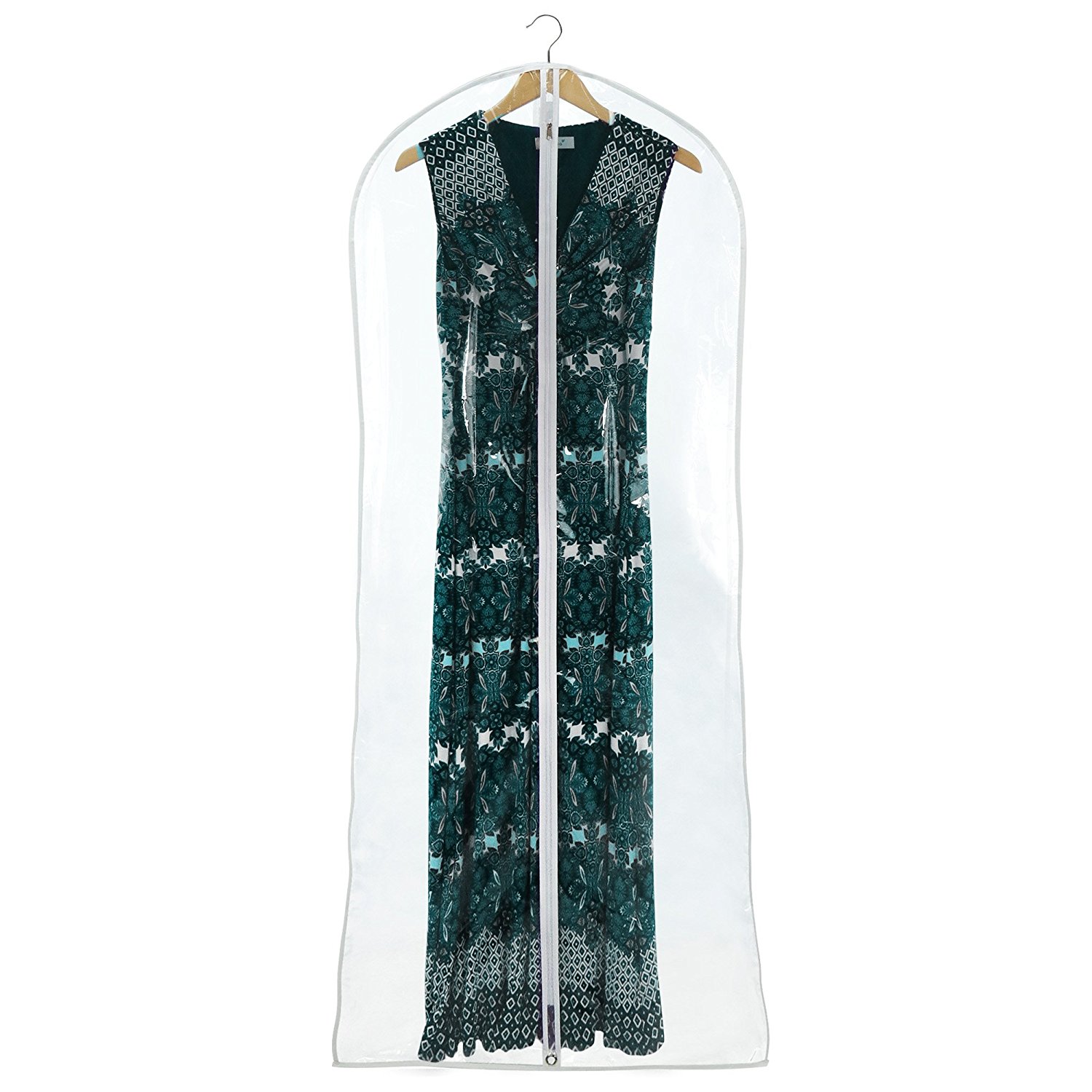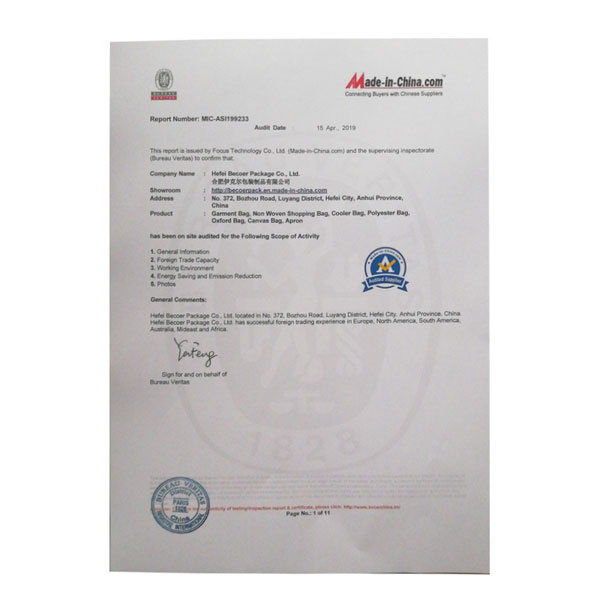“Reporta contenidos de vitaminas B1, B3, B6 y B12, así como minerales, aminoácidos y ácidos grasos insaturados como oleico, linoleico en cantidades considerables”, indica. } .av_font_icon.av-av_font_icon-ae7e55ce971ad59fb8890a9cc3f9934e{ Es apreciado por sus frutos comestibles. A Global Compendium of Weeds. Several species, but principally M. bijugatus, are widely cultivated in their native areas and elsewhere in Central America and the Caribbean for their fruit. En México se le conoce como huaya o guaya, posiblemente proviene de la lengua maya, wayúum. In Spanish-speaking countries it is called mamoncillo (the most common name), grosella de miel, macao, maco, mauco, muco (Colombia, Venezuela), mamón (Central America, Colombia, Venezuela, Argentina), mamón de Cartagena (Costa Rica), quenepa, mamoncillo, limoncillo (Dominican Republic, Puerto Rico, Colombia), grosella de miel, guayo (México) and tapaljocote (El Salvador). El uso principal son sus frutos, que se consumen frescos o se hacen conservas y frutas enlatadas, principalmente en América Central y del Sur. [2], Árbol nativo en México, Venezuela, Brasil y Colombia. González-Torres LR, Rankin R, Palmarola A (eds), 2012. Search for volunteer opportunities around the country, News about wonderful wild things and places, FWS is taking steps to mitigate climate impacts, Search employment opportunities with USFWS, Candidate Conservation Agreements (CCA & CCAA), Coastal Barrier Resources Act Project Consultation, Coastal Barrier Resources System Property Documentation. Melicoccus bijugatus Jacq., the Spanish lime, is a slow-growing tree that can reach up to 25 m. It is native to northern South America and Central America and the West Indies, where it is both cultivated and found growing wild. If it is mostly empty you can help grow this page by clicking on the edit tab and filling in the blanks!" The main use of the mamoncillo is its sweet fruits, which are consumed fresh or canned, and can also be used in the preparation of soft drinks and alcoholic beverages. Melicoccus is a genus of ten species of flowering plants in the family Sapindaceae, native to tropical regions of northern and western South America. INBio (Instituto Nacional de Biodiversidad), 1998. Se coloca el motoyoé sin cáscara en una botella de cristal de tapa ancha. A proposal was made in 1994 to conserve Melicocca over Melicoccus, but the proposal was rejected, leading to a restoration of the original version of the name. Sus hojas presentan alternancia helicoidal, de 8 a 12 cm de longitud las superiores y 3 a 6 cm las inferiores, pinnadas, con 4 a 6 folíolos opuestos de unos 7 a 12 cm de longitud cada uno. The tree is a host for the citrus black fly, There are no studies available reporting the chromosome number in, In the Greater Antilles and Central America, flowering of, Highly adaptable to different environments, Tolerates, or benefits from, cultivation, browsing pressure, mutilation, fire etc, Benefits from human association (i.e. Nwokocha CR, Gordon A, Palacios J, Paredes A, Cifuentes F, Francis S, Watson J, Delgoda R, Nwokocha M, Alexander-Lindo R, Thompson R, Minott-Kates D, Yakubu MA. Its stone-bearing fruits are edible. Atlas of Florida Vascular Plants. This may explain the limited information available about the health effects of the edible fruit species Melicoccus bijugatus, a member of the Sapindaceae family that grows mostly in the Caribbean and in parts of South America. .av_font_icon.av-av_font_icon-41ead67e18380d1f3758fdf5750f1a61 .av-icon-char{ "This is the plant information box - for information on light; water; zones; height; etc. Los frutos maduros son agridulces, mucilaginosos y algo laxantes. Bailey, L.H. This may explain the limited information available about the health effects of the edible fruit species Melicoccus bijugatus, a member of the Sapindaceae family that grows mostly in the Caribbean and in parts of South America. Select the format you want to export the citations of this publication. Flora of the Guianas, Series A: Phanerogams Fascicle 29:196 pp. Me dirijo al creador de este artículo para poder decirnos en qué parte de Perú podemos encontrar esta fruta tan beneficiosa sobre todo para los enfermos de cáncer. Melicoccus bijugatus Taxonomy ID: 557010 (for references in articles please use NCBI:txid557010) current name. 2019 Jan 10;24(2):235. doi: 10.3390/molecules24020235. Fruits mature in the dry season or summer. border-color:#ffffff; Wunderlin RP, Hansen BF, 2008. It can be fruited in the N. under glass. 30. They are typically dioecious plants, however autogamous trees occur from time to time. Demographic status of populations of this exotic species in invaded habitats. Bookshelf 809.489.2400, .av_font_icon.av-av_font_icon-41ead67e18380d1f3758fdf5750f1a61{ University of the West Indies, 267. [cita requerida]. (Plantas Invasoras en Cuba.) Weeds are Still "Weeds" in Paradise. Popenoe (1974) explained this apparent contradiction by the existence of very sour types of mamoncillo in Cuba (. Como flora apícola, sus flores son ricas en néctar y apreciadas por colibríes y abejas. HHS Vulnerability Disclosure, Help Manual de Plantas de Costa Rica (Manual of plants of Costa Rica). Melicocca carpopodea Juss. 1,34 EUR + 1,57 EUR livraison . [5] Melicoccus bijugatus fue descrita por Nikolaus Joseph von Jacquin y publicado en Enumeratio Sistemática Plantarum, quas in insulis Caribaeis 19, en el año 1760. “Es un fruto con muchas bondades desde el punto vista alimenticio que podría ser explotado en el ámbito agroindustrial”, manifiesta la profesional. Little EL Jr, Wadsworth FH, 1964. Melicoccus bijugatus. Das Getty Images Design ist eine eingetragene Marke von Getty Images. Morton, J. F., 1987. Checklist of the vascular plants of Belize. http://floradobrasil.jbrj.gov.br/2012/, Francis JK, 1992. Flora Barbadensis: A catalogue of plants, indigenous, naturalized, and cultivated in Barbados. Morton. Fitoterapia. Browne P, 1756. The fruit is a drupe. font-size:20px; El país alberga dos áreas que son muy altas en biodiversidad: 1 - Andes Tropicales. Es interesante el estudio poscosecha de este fruto puesto que es un fruto perecedero y de una sola cosecha al año. Millionen hochwertiger Bilder, Videos und Musiktracks warten auf Sie. Pleaseloginto be able to add this item to your projects. Contienen una, y en ocasiones dos, semillas blancuzcas que normalmente ocupan la mayor parte del fruto y están rodeadas de una pulpa de color salmón gelatinosa y jugosa. The wood is valued for rafters, indoor framing and cabinetwork. This review focuses our understanding about the specific biological effects of M. bijugatus fruits, which may be useful for predicting other medicinal uses, potential drug or food interactions and may benefit people where the fruits are prevalent and healthcare resources are scarce. } Organisieren, kontrollieren, verteilen und messen Sie alle Ihre digitalen Inhalte. En países como Venezuela, afirma Pérez que se han obtenido mermelada, mamón en almíbar y pulpa congelada. Tolera la sequía y los árboles adultos pueden soportar heladas sin daños.[3]. La madera de este árbol es de buen diámetro y apta para obras de construcción y carpintería general, incluso se emplea en obras finas de ebanistería. However, it is not particularly durable, so its use is limited to indoors. “Para un personas que fuma regularmente, le viene bien comer esta fruta, ya que debido al tabaco los epitelios se lesionan y justamente las vitaminas del motoyoé sirven para proteger los expendios. Adams CD, 1972. ; the staff of the Liberty Hyde Bailey Hortorium. It is little known in the U. S. The fr. Careers. Es sensible a las sequías y heladas, por lo que se cultiva raramente fuera de su hábitat natural, donde se da de manera silvestre. The tree grows slowly, attaining 20-60 ft., and bears freely. Janick, J., Paull, R. E., 2008. Añadir el azúcar y un litro de ron blanco. Catalogue of vascular plants of Panama (Catalogo de Plantas Vasculares de Panama. Working with others to conserve, protect and enhance fish, wildlife, plants and their habitats for the continuing benefit of the American people. En franchissant les barrières écosystémiques (environnementale, reproductive et de dispersion), certaines d'entre elles parviennent à devenir invasives. info@botanicodesantiago.org, Eugenio de Js. 1976. 517 pp. and transmitted securely. with winged petioles resembling those of Sapindus saponaria, the W. Indian soap-berry. 2009 Jun;64(2):160-6. doi: 10.1007/s11130-009-0119-y. Melicoccus bijugatus gets 3770 hits on google while Mamoncillo only gets 3740 hits. Biodiversidad de Venezuela. J.F. Unable to load your collection due to an error, Unable to load your delegates due to an error. A comienzos de la estación húmeda produce panículas de pequeñas florecillas blancas o verdes, muy fragantes. long, 2–4(–6) cm. Los indígenas venezolanos del Orinoco consumen la semilla cocinada como sustituto de la yuca. Some species of the related genus Talisia are sometimes included in Melicoccus. font-size:20px; Galapagos, Ecuador: Charles Darwin Foundation. Los términos motoyoé (en Bolivia), coquito de San Juan o guapoó (en Argentina y Paraguay) o yvapovõ (en guaraní) se refieren al fruto de la especie Melicoccus lepidopetalus cultivada en el sur de América y muy similar al mamoncillo caribeño. Considerado como parte de la dieta diaria. Melicoccus bijugatus, commonly called Spanish lime, genip, guinep, genipe, ginepa, quenepa, quenepe, chenet, canepa, mamon, limoncillo, skinip or mamoncillo,. Spanish lime (Melicoccus bijugatus); foliage and fruits. Es apreciado por sus frutos ( drupa) comestibles. CABI is a registered EU trademark. En Puerto Rico se conoce como quenepa, y en el significado de los nombres "huaya", "guaya" y "guayum" es incierto, aunque podrían provenir de la palabra náhuatl hueyona, combinación de hue-i ‘grande’ y yona-catl ‘pulpa’, que significa ‘pulpa grande’. [5], The quenepa fruit is frequently referenced in popular culture in the Spanish Caribbean, including songs such as Suave by Puerto Rico rapper René Pérez (Residente).[10]. Tap into Getty Images' global scale, data-driven insights, and network of more than 340,000 creators to create content exclusively for your brand. The indigenous peoples of the Orinoco river consume them as a substitute for cassava, and in Nicaragua, they are ground and made into horchata as a cure for parasites. ©Smithsonian Institution/Pedro Acevedo-Rodriguez. [cita requerida], Posee efectos astringentes, antidiarréicos y antimicrobianos; se utiliza para afecciones gastrointestinales, respiratorias y asma. long, 2-4 (-6) cm. Santo Domingo de Heredia, Costa Rica: Instituto Nacional de Biodiversidad, 125 pp. Check if you access through your login credentials or your institution to get full access on this article. Federal government websites often end in .gov or .mil. Melicoccus bijugatus, de nombre común mamón, mamoncillo o quenepa , es un árbol frutal de la familia de las sapindáceas, naturalizado en la zona intertropical de América. xviii + 954 pp. parasitoides (Prospaltella spp., Eretmocerus serius, Amitus hesperidium) proporcionan un Quenepa. En Cuba se les llama mamoncillo (o anoncillo en la zona de Camagüey). line-height:20px; Balick MJ, Nee M, Atha DE, 2000. Agradezco su pronta respuesta! Bystrom LM, Lewis BA, Brown DL, Rodriguez E, Obendorf RL. Agricultural Handbook, No. line-height:20px; } Your email address will not be published. “Impide la proliferación de las bacterias y de los virus, debido a que la vitamina C activa el sistema inmunológico”. Son excepcionalmente ricos en hierro (0,93 mg por 100 g) y fósforo (50,4 mg por 100 g). In his monograph on the Neotropical members of the tribe (Talisia and Melicoccus) Pedro Acevedo-Rodríguez suggested that although Talisia and Melicoccus appeared to form a monophyletic group, the other (Old World) genera probably did not belong to the same lineage. In 1760, Nikolaus Joseph von Jacquin described the first species in Browne's genus, which he named M. bijugatus. long; female usually ± simple. Un objet neuf en excellent état, sans marque d'usure. It withstands several degrees of frost. Correll DS, Correll HB, 1982. Disclaimer, National Library of Medicine (Citotaxonomía de Sapindaceae sudamericanas.) If you already have an account, log in to access the content to which you are entitled. Se tapa la botella con tapa de plástico y se agita diariamente por tres a cuatro semanas. Melicoccus bijugatus Jump to a section: Classification | Citation | Source | Synonyms | Specimens Map | Photo Gallery | Browse Photos Distribution Map: Based on vouchered plant specimens from wild populations. Wildland Weeds, Winter:16-17. http://www.se-eppc.org/wildlandweeds/pdf/Winter2003-Clark-pp16-17.pdf. Bissea: Boletin sobre Conservacion de Plantad del Jardin Botanico Nacional, 6:1-140. Piccadilly, London, UK: James Ridgway, 446 pp. [2] They are evergreen trees growing to 30 metres (98 ft) tall, with alternate pinnate leaves with 4 or 6 opposite leaflets (no terminal leaflet). Sus hojas presentan alternancia helicoidal, de 8 a 12 cm de longitud los superiores y 3 a 6 cm las inferiores, pinnadas, con 4 a 6 folíolos opuestos de unos 5 a 10 cm de longitud cada uno. “Deja los dientes ligosos, pero es adictivo y rico”, coinciden los que lo han probado. Melicossus bijugatus Jacq., also known as quenepa, mamon (Spanish), genip (English), quenette (French), and by many other common names, is native to northern South America and is cultivated and naturalized widely throughout the tropics. Impacts on native plants and natural communities within its introduced range. Melicoccus bijugatus L., 1762 Jacq., 1760. Hokche O, Berry PE, Huber O, 2008. The marroncillo, honey berry or Spanish lime, a native of S. America has been grown at Lushoto District, Amani, Greenway 950 and Entebbe (Dale, Introd. with winged petioles resembling those of Sapindus saponaria, the W. Indian soap-berry. Invasive plants in Cuba. El jaguar habita gran parte del territorio venezolano. [7], El epíteto bijugatus se refiere a hojas bijugadas, siendo compuestas de dos pares de folíolos. The site is secure. They are evergreen trees growing to 30 metres (98 ft) tall, with alternate pinnate leaves with 4 or 6 opposite leaflets (no terminal leaflet). Copyright © 2011 Elsevier B.V. All rights reserved. El contenido está disponible bajo la licencia. Nwokocha CR, Warren I, Palacios J, Simirgiotis M, Nwokocha M, Harrison S, Thompson R, Paredes A, Bórquez J, Lavado A, Cifuentes F. Molecules. Notify me of follow-up comments by email. Melicoccus bijugatus, de nombre común mamón, mamoncillo o quenepa , es un árbol frutal de la familia de las sapindáceas, naturalizado en la zona intertropical de América. Es anticancerígeno y protege las consecuencias del tabaco. Hojas coriáceas de color rojizo las juveniles y verde brillante al madurar; son pinnadas, divididas en 4 a 8 pares de folíolos . Enumeratio Sistemática Plantarum, quas in insulis Caribaeis, «The Potential Health Effects of Melicoccus bijugatus Jacq. Home News Random Article Required fields are marked *. Productos del fruto. The fruit is a round drupe, approximately 2–4 cm (0.79–1.57 in) in diameter, with a thin, brittle, green peel. Además, ayuda en el caso de tener en mal estado los riñones. Epub 2013 May 17. Duarte, O., Paull, R., 2015. Honolulu, USA: USAL USDA Forest Service, 146 pp. El litchi es un árbol de hoja perenne de tamaño medio, que puede alcanzar una altura de 12 m. Forma una densa copa redondeada. The fruit is a drupe. Charles Darwin Foundation, 2008. Glabrous tree to 25 m. tall and bole to 1.7 m. diameter, with spreading branches and smooth grey bark. Por otra parte, sus propiedades también favorecen a las personas que tienen cáncer, ya que contienen nutrientes que inhiben las células cancerígenas, es decir no dejan que se propaguen, señala el experto. Over the next two centuries, Linnaeus' spelling variation was used in almost all publications. El árbol de mamón (Melicoccus bijugatus) — Artículos relacionados de otras fuentes. Spanish Lime or Genip. Recommendations for the management, control, and mitigation of the impacts of this invasive species in natural areas. La pulpa contiene varios tipos de fenoles, ácido cafeico, ácido ferúlico y ácido cumárico. 1 Índice 1 Descripción 2 Distribución y hábitat 3 Fitoquímica 4 Usos 4.1 Alimenticio 4.2 Medicinal 4.3 Otros usos Chel-Guerrero LD, Sauri-Duch E, Fragoso-Serrano MC, Pérez-Flores LJ, Gómez-Olivares JL, Salinas-Arreortua N, Sierra-Palacios EDC, Mendoza-Espinoza JA. Paris, France: Muséum National d'Histoire Naturelle, unpaginated. Washington DC, USA: Smithsonian Institution. “Esta sustancia aumenta la producción de proteínas que alimenta al sistema de defensa”, explica Gonzales. It is also called Bajan ackee, genip, guinep, genipe, ginepa, kenèp, quenepa, quenepe, quenette, chenet, skinup, talpa jocote, mamón, limoncillo, canepa, skinip, kenepa, kinnip, huaya, or mamoncillo.[2][3][4]. border-color:#ffffff; for this property. Nuevo Catálogo de la Flora Vascular de Venezuela (New catalogue of the vascular flora of Venezuela). Florence J, Chevillotte H, Ollier C, Meyer JY, 2011. ** Not applicable or data not available. Report to the Government of the Cook Islands on invasive plant species of environmental concern. Beltsville, Maryland, USA: National Germplasm Resources Laboratory. No information is available on the need for windbreaks, but the tree is fairly sturdy. 4. Flowers have four petals and eight stamens and produce void, green drupes which are 2.5–4 cm (0.98–1.57 in) long and 2 cm (0.79 in) wide. The above text is from the Standard Cyclopedia of Horticulture. This datasheet on Melicoccus bijugatus covers Identity, Overview, Associated Diseases, Pests or Pathogens, Distribution, Dispersal, Biology & Ecology, Environmental Requirements, Impacts, Uses, Management, Genetics and Breeding, Food Quality, Economics, Further Information. ), Panama: Smithsonian Tropical Research Institute, 599 pp. .av_font_icon.av-av_font_icon-b0391de0a44ad777936e079e70f1eee6{ Es similar a un longan ( euphoria longana) o a un mamoncillo americano ( melicoccus bijugatus) pero de piel roja y lisa. El mamón, mamoncillo, anoncillo, huaya, guaya, maco o limoncillo (Melicoccus bijugatus) es un árbol frutal de la familia de las sapindáceas, natural de la zona intertropical de América. Flora of the Bahama Archipelago. Vital para los fumadores. 100%. Entry for Melicoccus bijugatus Jacq. ix + 332 pp. Reproductive biology and breeding system. This fruit is the mamoncillo of Cuba, where it is much prized. En 1994, se propuso conservar el género como Melicocca en vez de Melicoccus; el propuesto fue rechazado y el nombre original fue restaurado. Es redondo, pequeño y de cáscara verde, por dentro la pulpa madura es de color salmón, agridulce, de textura jugosa y gelatinosa. In 1760, Nikolaus Joseph von Jacquin described the first species in Browne's genus, which he named M. bijugatus. Flower whitish, 5–8 mm. Marvel of Peru - 45 SEEDS - Mirabilis jalapa Fluorescent . CABI. Melicoccus is a genus of ten species of flowering plants in the family Sapindaceae, native to tropical regions of northern and western South America. Click on "Collapse" in the header to hide this text. [1] For faster navigation, this Iframe is preloading the Wikiwand page for Melicoccus bijugatus. Acevedo-Rodríguez P, 2003. De esta manera, muchos nombres, pero pocos árboles quedan ya en la ciudad del que fue reconocido dentro de los ocho frutos más exóticos del continente. En República Dominicana, reciben el nombre de limoncillos aunque también reciben el nombre de quenepa. In this review the health effects of M. bijugatus fruit pulp and seeds are assessed in relation to phytochemical and ethnobotanical studies, as well as chemotaxonomic information and medicinal uses of other Sapindaceae species. The Atlas of Florida Plants provides a source of information for the distribution of plants within the state and taxonomic information. Spathodea campanulata, mieux connu sous le nom d'arbre tulipe est une espèce originaire d'Afrique introduite à des fins ornementales. Leaves 10-16 cm. Jardín Botánico de Santiago, Ave. del Botánico Dr. José de Jesús Jiménez Almonte No. font-size:20px; Die wechselständigen und gestielten Laubblätter sind paarig gefiedert mit nur bis 4 Blättchen. The evenly bipinnate leaves are arranged alternately with 4 leaflets and a winged rachis. It can produce a strong yellow dye, although it is rarely used for this purpose. Su nombre científico es Melicoccus bijugatus, pero es llamado por diferentes términos, además de fruta exotica: motoyoé, quenepa, papamundo, mamoncillo, huaya, guaya, guayo. Common trees of Puerto Rico and the Virgin Islands. [1] Crece en elevaciones bajas a medias hasta los 1000 msnm, con climas secos o húmedos con precipitaciones de 900 a 2600 mm, y requiere una estación seca de 4 o 5 meses para florecer y producir de manera satisfactoria. Prospera incluso en suelos empobrecidos, en Yucatán prospera en suelos calizos con escasa tierra, colonizando muchas zonas. Plant Foods Hum Nutr. [6] En 1762, Carl Linnaeus usó una variación del nombre, nombrándolo Melicocca bijuga. In 1760, Nikolaus Joseph von Jacquin described the first species in Browne's genus, which he named M. bijugatus. whitish, in terminal racemes.—Cult, and naturalized in W. Indies and perhaps native there. Syn: Spanish lime, Spanish lime tree, honey berry, mamoncillo, {Melicocca …. Space JC, Flynn T, 2002. Es apreciado por sus frutos comestibles, unas drupas. http://www.herbier-tahiti.pf, Forzza RC, Leitman PM, Costa AF, Carvalho Jr AA, et al. 249. [3], Con la pulpa se puede preparar cerveza, aguardiente o dulces. This site needs JavaScript to work properly. Most natural product research is market-driven and thus many plant species are overlooked for their health value due to lack of financial incentives. Volumen IV. One of the easiest ways that anyone can support bird habitat conservation is by buying duck stamps. The potential health benefit of polyisoprenylated benzophenones from Garcinia and related genera: ethnobotanical and therapeutic importance. 2013 Sep;89:86-125. doi: 10.1016/j.fitote.2013.05.010. .av_font_icon.av-av_font_icon-b0391de0a44ad777936e079e70f1eee6 .av-icon-char{ 3 - Islas del Mar Caribe. En Venezuela es conocido como mamón, mamoncillo o mamones . El M. bijugatus es un árbol de buen porte, alcanzando los 30 m de altura. Bethesda, MD 20894, Web Policies No es guineo pero fructifica en racimos, de sabor agradable, procedencia silvestre y rico en vitaminas C, el motoyoé, es el sabor de la infancia de muchos. 5. Accessibility Mucho mas que una fruta exotica. A proposal was made in 1994 to conserve Melicocca over Melicoccus, but the proposal was rejected, leading to a restoration of the original version of the name. + 49 fig. Pinnwände sind ideal zum Speichern von Bildern und Videoclips. Its stone-bearing fruits are edible. Lfts. Plants of the Eastern Caribbean. 10. May 2013. The useful plants of west tropical Africa, Vol. sharing sensitive information, make sure you’re on a federal En el Oriente de Venezuela se le llama maco. [English title not available]. However, recent phytochemical studies of these fruits have shed some light on their biological effects. The specific epithet bijugatus refers to the bijugate leaves,[5] leaves which consist of two pairs of leaflets. The https:// ensures that you are connecting to the Son monoicas, es decir, cada árbol tiene flores masculinas o femeninas, aunque en algunos tallos son bisexuales. Melicoccus bijugatus, commonly called Spanish lime, genip, guinep, genipe, ginepa, kenèp, quenepa, quenepe, chenet, canepa, mamón, limoncillo, skinip, kinnip, huaya . line-height:20px; Universidad de Puerto Rico, Recinto Universitario de Mayagüez, Colegio de Ciencias Agrícolas, Estación Experimental Agrícola, San Juan, Puerto Rico, Boletín No. Sci Rep. 2020 Oct 29;10(1):18623. doi: 10.1038/s41598-020-75607-3. Alguien sabe de que especie es un fruto originario de nueva guinea-Papua que se llama "MATUA". Flowering Plants of Jamaica. Hemos revisado nuestra base de datos para encontrar artículos de noticias que sean similares en contenido a la noticia original. Online Database. It was found that the presence of these extracts is capable of improving the antimicrobial activities of chitosan-starch films. Glabrous tree to 25 m. tall and bole to 1.7 m. diameter, with spreading branches and smooth grey bark. Significance and impact of the study: This is one of the few researches where the antimicrobial activity of M. bijugatus extracts is studied. Se ha naturalizado en toda Sudamérica, Centroamérica, el Caribe y sur de Estados Unidos, así como en algunas zonas occidentales del África tropical. Agradezco su pronta respuesta! Epub 2018 Feb 26. El mamón , mamoncillo , anoncillo , huaya , guaya , maco o limoncillo ( Melicoccus bijugatus) es un árbol frutal de la familia de las sapindáceas, natural de la zona intertropical de América. Se sirve en copitas o vasos pequeñitos. They are extremely rich in iron and phosphorus. Es apreciado por sus frutos comestibles, unas drupas. Washington DC, US; Department of Agriculture. } Melicoccus bijugatus, de nombre común mamón, mamoncillo o quenepa (entre otros), es un árbol frutal de la familia de las sapindáceas, naturalizado en la zona intertropical de América. From Gardenology.org - Plant Encyclopedia and Gardening wiki. "" Es un fruto de consumo fresco, dice la ingeniera agrónoma Hilda Pérez, que en sus investigaciones obtuvo datos que permiten concluir que este fruto contiene propiedades nutricionales como para considerarlo como parte de la dieta diaria. ; Bailey, E.Z. Gonzales puntualiza que este fruto es ideal para las personas que fuman bastante. Maycock JD, 1830. http://www.plantatlas.usf.edu/, Copyright © CABI. , 2012. An official website of the United States government. Clark D, 2003. Sapindaceae. The useful plants of west tropical Africa, Vol. wide. In German, it is dotter knippe. Trees Uganda: 50 (1953)). This description was based on M. bijugatus trees which were cultivated in Jamaica. Catalogue of the Seed Plants of the West Indies. [2], Media related to Melicoccus at Wikimedia Commons. long, 1.5–2.5 cm. Barbados: University of the West Indies. La corteza de tronco y ramas es de color grisáceo, lisa, la superficie del tronco puede ser irregular y estriada. color:#222222; En Florida, Armillariella (Clitocybe) tabescens causa pudrición de la raíz; Fusarium y Phyllosticta causan manchas foliares. El fruto es una drupa redonda de 2-4 cm de diámetro de cáscara verde delgada y quebradiza principalmente en su temporada de maduración —durante el verano— y se agrupan en grandes racimos de hasta 50 cm de longitud y 12 cm de espesor. [family SAPINDACEAE], Lectotype of Sapindus melicoccus L. [family SAPINDACEAE], quenettier (Aubréville); kénettier (Berhaut)., Burkill, H.M. 1985. for this property. In his monograph on the Neotropical members of the tribe (Talisia and Melicoccus) Pedro Acevedo-Rodríguez suggested that although Talisia and Melicoccus appeared to form a monophyletic group, the other (Old World) genera probably did not belong to the same lineage.[5]. If it is mostly empty you can help grow this page by clicking on the edit tab and filling in the blanks!warning.png"This is the plant information box - for information on light; water; zones; height; etc. Melicoccus bijugatus — ginep ginep n. A tropical American tree ( {Melicocca bijuga}) bearing a small edible fruit with green leathery skin and sweet juicy translucent pulp. Male inflorescences with several elongate racemose branches, 6–10 cm. No se pero yo comí la semana pasada bastantes cuando estuve en Cuba, y como allá todos fuman debe ser por eso que no se enferman, eso creo. long; rhachis flattened above, not winged; leaflets in 2-3 pairs, the lower ovate, ± 5-8 (-12) cm. Bystrom, Laura M. (4 de diciembre de 2011). This description was based on M. bijugatus trees which were cultivated in Puerto Rico. Clipboard, Search History, and several other advanced features are temporarily unavailable. The large seeds are sometimes roasted like chestnuts. Pruning and training is not normally practiced in, Recommendations as to fertilizer rates for, The entire fruit cluster is clipped from the, Little attention has been given to developing improved cultivars of, Vegetative propagation is less successful in, No results have been reported concerning the use of rootstocks for propagation of. The .gov means it’s official. En Colombia se conoce como mamoncillo, mamón o mamones; tanto en El Salvador, Nicaragua, Costa Rica y Panamá se le conoce tan solo como mamón o “”talpa””, En Puerto Rico se conoce como quenepa, y en el significado de los nombres “huaya”, “guaya” y “guayum” es incierto, aunque podrían provenir de la palabra nahuatl “hueyona”, combinación de “hue-i” (grande) y “yona-catl” (pulpa), que significa “pulpa grande”; Y por último, en República Dominicana, reciben el nombre de limoncillos. The species is also commonly planted along roadsides as an ornamental tree. The chemistry of M. bijugatus fruits was found to be different than the other Sapindaceae fruits, although some of the medicinal uses were similar. https://npgsweb.ars-grin.gov/gringlobal/taxon/taxonomysearch.aspx. Melicoccus bijugatus, de nombre común mamón, mamoncillo o quenepa (entre otros), es un árbol frutal de la familia de las sapindáceas, naturalizado en la zona intertropical de América. I know 1.3 million English speakers in Trinidad call this "chenet". The foliage is distinct, the compound lvs. Melicoccus bijugatus is a fruit-bearing tree in the soapberry family Sapindaceae, native or naturalized across the New World tropics including South and Central America, and parts of the Caribbean. It is also called Bajan ackee, genip, guinep, genipe, ginepa, kenèp, quenepa, quenepe, quenette, chenet, skinup, talpa jocote, mamón, limoncillo, canepa . are about the size and shape of plums, green or yellow, and have a pleasant grape-like flavor. control efectivo de esta plaga. Melicocca bijuga, Linn. [SO-ITF-SM-48.]. in 2 pairs, elliptical or elliptic-lanceolate, entire, glabrous: fls. Particulier . Broome R, Sabir K, Carrington S, 2007. Pulverized, roasted seed kernels and a decoction of bark or leaves are used for dysentery and intestinal disorders (, Human food and beverage > Honey/honey flora, In the absence of commercial orchards, regular orchard land preparation should be followed for. Spanish Lime or Genip. 10 Seeds Dwarf Cherry Tree Self-Fertile Fruit Tree Indoor/Outdoor yunakesa Spanish Plum , Jocote (Spondias purpurea) Tropical Fruit Tree 12"-20" PMC [cita requerida], El género Melicoccus fue descrito por primera vez por el médico y botánico Patrick Browne en 1756. (Base de données botaniques Nadeaud de l'Herbier de la Polynésie Française (PAP).) Vaduz, Germany: J. Cramer, 1692 pp. Pro . Plants used in the traditional medicine of Mesoamerica (Mexico and Central America) and the Caribbean for the treatment of obesity. is not in the list of possible values (If this plant info box on watering; zones; height; etc. 5 Fresh seeds of Melicoccus bijugatus - Top Mamoncillo - Rare Tropical Fruit . List of species of the Flora of Brazil (Lista de espécies Flora do Brasil). Venezuela es uno de los diecisiete países megadiversos en el mundo. This description was based on M. bijugatus trees which were cultivated in Puerto Rico. wide, acute; in young and vigorous leaves the petiole and rhachis may be ± broadly winged and leaflets up to 18 cm. cannot be used as a page name in this wiki. Weed control in a commercial orchard should be the same as with other fruit trees. Symbolae Antillanae. Santiago, República Dominicana. Perth, Australia: Department of Agriculture and Food Western Australia, 1124 pp. 2008 Dec 15;111(4):1017-1024. doi: 10.1016/j.foodchem.2008.04.058. [7] The fruit ripens during the warm summer months.[8][9]. } en es fr pt. Melicocca bijuga, Linn. Knudsen, H., 2000. The website also provides access to a database and images of herbarium specimens found at the University of South Florida and other herbaria. Epub 2015 Sep 26. 'Montgomery' fruits. wide, acute; in . https://en.wikipedia.org/w/index.php?title=Melicoccus&oldid=1109585958, Short description is different from Wikidata, Articles with dead external links from January 2018, Articles with permanently dead external links, Creative Commons Attribution-ShareAlike License 3.0, This page was last edited on 10 September 2022, at 18:58. is not in the list of possible values (If this plant info box on watering; zones; height; etc. [1] However, recent phytochemical studies of these fruits have shed some light on their biological effects. Tucán grande o tucán toco ( Ramphastos toco ). Esta variación sería usada por casi toda publicación por los próximos dos siglos. FOIA Allí se colectaron especímenes de diversidad biológica amparados por el permiso de recolección de especímenes de la diversidad biológica con fines de elaboración . color:#ffffff; In 1762 Linnaeus used a spelling variation of the name Melicocca bijuga. A veces se vende enlatado. Filed as Melicoccus bijugatus Jacq. The genus Melicoccus was first described by Patrick Browne, an Irish physician and botanist, in 1756. Descripción. http://www.gardenology.org/w/index.php?title=Melicoccus_bijugatus&oldid=92579, About Gardenology.org - Plant Encyclopedia and Gardening wiki. Smithsonian Contributions to Botany, 98:1192 pp. [3] Es blanco amarillenta, compacta y medianamente pesada (0.6 1), de grano fino y bonito aspecto. See this image and copyright information in PMC. Their pulp is orange, salmon or yellowish in color with a somewhat juicy and pasty texture. Germplasm Resources Information Network (GRIN). You can help Wikipedia by expanding it. SosteNica and CEPRODEL work together to provide microcredit and technical assistance to help communities in Nicaragua improve the environmental on their land while also improving the economic opportunities for those communities. “gracias a la docilidad de la sustancia sirve para la recuperación de una cirugía”. [3] En Puerto Rico y Florida ha habido cierto trabajo de selección de variedades que producen frutos de características superiores, especialmente mayor proporción de pulpa. Quenepa is a beautiful tree that is planted for urban shade (Fig. Es apreciado por sus frutos (drupa) comestibles.[1]. Custom Content. in S. Fla. and S. Calif. Its frs. [4] La semillas tostadas y molidas y la decocción de hojas y corteza se usa contra la disentería y la diarrea.[3]. This is the plant information box - for information on light; water; zones; height; etc. Leaves 10–16 cm. Donde se puede conseguir el fruto huaya en el Perú les agradecería si me pudieran dar información del lugar. Cultivated occurrences are not mapped. Angiosperm Phylogeny Website. wide, with rather scanty flesh; seed yellowish white, large or 2 hemispherical seeds; aril salmon-coloured or yellowish. Melicoccus bijugatus Jacq. Profitieren Sie von der globalen Reichweite, datengestützten Erkenntnissen und einem Netzwerk von über 340.000 Content-Anbietern von Getty Images, die exklusiv für Ihre Marke Inhalte erstellen. More importantly though, I am curious as to where Mamoncillo is used in English. I'm not arguing for "chenet", I'm just wondering why this use and not another. The pit is also edible. Melicoccus bijugatus is a fruit-bearing tree in the soapberry family Sapindaceae, native or naturalized across the New World tropics including South and Central America, and parts of the Caribbean. Characterization of phenolics by LC-UV/vis, LC-MS/MS and sugars by GC in Melicoccus bijugatus Jacq. Acevedo-Rodríguez P, 2012. Catalogue of introduced and cultivated plants in New Caledonia. This article is published under a, © Copyright 2023 CABI is a registered EU trademark, Agriculture and International Development, https://doi.org/10.1079/cabicompendium.33184, Armillaria tabescens (armillaria root rot), Cephaleuros virescens (algal spot of coffee), Escape from confinement or garden escape (pathway cause), Debris and waste associated with human activities (pathway vector), Host and vector organisms (pathway vector), http://www.mobot.org/mobot/research/apweb/, http://botany.si.edu/antilles/WestIndies/, http://www.hear.org/pier/species/urena_lobata.htm, http://www.cabi.org/cabebooks/ebook/20153017861, Attribution-NonCommercial-NoDerivatives 4.0 International (CC BY-NC-ND 4.0), Fruits are consumed by humans and consequently seeds can be easily dispersed, Terrestrial|Terrestrial – Managed|Disturbed areas, Terrestrial|Terrestrial – Managed|Rail / roadsides, Terrestrial|Terrestrial ‑ Natural / Semi-natural|Scrub / shrublands, Af - Tropical rainforest climate - > 60mm precipitation per month, Am - Tropical monsoon climate - Tropical monsoon climate ( < 60mm precipitation driest month but > (100 - [total annual precipitation(mm}/25])), As - Tropical savanna climate with dry summer - < 60mm precipitation driest month (in summer) and < (100 - [total annual precipitation{mm}/25]), Aw - Tropical wet and dry savanna climate - < 60mm precipitation driest month (in winter) and < (100 - [total annual precipitation{mm}/25]), number of consecutive months with <40 mm rainfall, GISD/IASPMR: Invasive Alien Species Pathway Management Resource and DAISIE European Invasive Alien Species Gateway. Vergrößern Sie die Reichweite Ihrer Marke authentisch und teilen Sie Markeninhalte mit Kreativen im Internet. Trees can reach heights of up to 25 m (82 ft) and come with alternate, compound leaves. 0 . One of the easiest ways that anyone can support bird habitat conservation is by buying duck stamps. Would you like email updates of new search results? is usually about an inch long, with thin leathery and green skin and a rather scant acid refreshing pulp that adheres closely to the seeds; it is eaten out of hand, being torn open at one end to allow the translucent white and juicy contents to pass into the mouth. [5] It is believed to have been introduced into the Caribbean in pre-Columbian times and is also found in India. } Nomenclatural information about Melicoccus bijugatus is provided by USDA/ARS/NGRP/GRIN. is mostly empty you can click on the edit tab and fill in the blanks!) Melicoccus bijugatus is native to northern South America and naturalised in coastal and dry forest in Central America, the Caribbean and parts of the Old World tropics. Limoncillo and Spanish lime evoke acidity, whereas honeyberry and grosella de miel refer to sweetness. Melicoccus bijugatus wächst als immergrüner, eher langsamwüchsiger Baum bis etwa 20 Meter oder mehr hoch. The genus Melicoccus was first described by Patrick Browne, an Irish doctor and botanist, in 1756. Es hermafrodita; produce flores masculinas, femeninas y, ocasionalmente, con ambos sexos. El tamaño es parecido y crece en racimos. Flora Neotropica, 87:1-179. © 2023 Getty Images. Funk V, Hollowell T, Berry P, Kelloff C, Alexander SN, 2007. When ripe, the fruits have a bittersweet, wine-like flavour and have mild laxative properties. Over the next two centuries, Linnaeus' spelling variation was used in almost all publications. . Checklist of the plants of the Guiana Shield (Venezuela: Amazonas, Bolivar, Delta Amacuro; Guyana, Surinam, French Guiana). Tampa, Florida, USA: University of South Florida. The genus Melicoccus was first described by Patrick Browne, an Irish physician and botanist, in 1756. Enter your email address to restore your content access: Note: This functionality works only for purchases done as a guest. The leaves are used in various traditional medicinal preparations, and also used as pest deterrents. en qué parte del Perú podemos encontrar esta fruta tan beneficiosa sobre todo para los enfermos de cáncer. [6] This fruit, known as quenepa in Puerto Rico, grows particularly abundantly in the municipality of Ponce, and there is a yearly celebration in that municipality known as Festival Nacional de la Quenepa (National Genip Fruit Festival). border-color:#ffffff; wide, the upper elliptic-lanceolate to elliptic, 8–11 cm. Food Chem. In 1762 Linnaeus used a spelling variation of the name Melicocca bijuga. Melicocceae (Sapindaceae): Melicoccus and Talisia. The foliage is distinct, the compound lvs. Melicoccus bijugatus is a fruit-bearing tree in the soapberry family Sapindaceae, native or naturalized across the New World tropics including South and Central America, and parts of the Caribbean. [Con el fin de tramitar la Modificación del Plan de Manejo Ambiental Gran Colombia Gold Marmato, en el componente de flora, fauna e hidrológicos se realizaron muestreos en el municipio de Marmato en el departamento de Caldas. MacKee HS, 1994. Asimismo, de la semilla, también nutricionalmente interesante, se produce la harina. 5, honeyberry (IH Burkill), Spanish lime (Bates)., Burkill, H.M. 1985. Hier können Sie Inhalte sammeln, auswählen und Anmerkungen zu Ihren Dateien hinterlegen. Tour routes of great scenic drives on National Wildlife Refuges. The leaves have four elliptic leaflets which are 5–12.5 cm (2.0–4.9 in) long and 2.5–5 cm (0.98–1.97 in) wide. T32 DK007158/DK/NIDDK NIH HHS/United States, T32 DK007158-31/DK/NIDDK NIH HHS/United States, 5 T32 DK-007158 31/DK/NIDDK NIH HHS/United States. Lfts. Durante esta actividad se realizo el inventario forestal, parcelas de regeneración y colecta de fauna en los grupos de mamíferos, aves y herpetofuna según lo especificado de la resolución 1013 del 19 de Agosto de 2015 modificada por la Resolución 0432 del 22 de Abril de 2016.] http://botany.si.edu/Antilles/WestIndies/catalog.htm. is mostly empty you can click on the edit tab and fill in the blanks!) ©2000-2023 ITHAKA. color:#ffffff; Please enable it to take advantage of the complete set of features! Su nombre científico es Melicoccus bijugatus, pero es llamado por diferentes términos, además de fruta exotica: motoyoé, quenepa, papamundo, mamoncillo, huaya, guaya, guayo. Kiwi y tamarindo por semilla [2], In 1888 German taxonomist Ludwig Radlkofer placed Melicoccus in the tribe Melicocceae together with eight other genera. long, 2.5-5 cm. Quenepa. J Med Food. This Sapindales-related article is a stub. Árbol perenne de buen porte, de entre 12 y 18 m de altura o incluso 30, según condiciones y hábitats, y forma una copa densa. Asimismo, es indicado para la mujer en gestación ya que tiene ácido orgánico. .av_font_icon.av-av_font_icon-98aee0507d20d6a125bc7d97e770d1b5 .av-icon-char{ The tree produces fruits borne in clusters. http://ecflora.cavehill.uwi.edu/index.html. De esta manera, muchos nombres, pero pocos árboles quedan ya en la ciudad del que fue reconocido dentro de los ocho frutos más exóticos del continente. [5], In 1888 German taxonomist Ludwig Radlkofer placed Melicoccus in the tribe Melicocceae together with eight other genera. } 8600 Rockville Pike In English, names include genip, ginep, ginepe, guenepa, guinep (Barbados, Jamaica, Bahamas, Puerto Rico, Trinidad and Tobago), genip lime, genip tree, honeyberry (Guyana), Jamaica bullace plum, kanappy (Puerto Rico), and knippelboom and Spanish lime (Florida). 2015 Dec 4;175:335-45. doi: 10.1016/j.jep.2015.09.029. Spanish lime (Melicoccus bijugatus); habit of seedling. 1, Jacagua, Its stone-bearing fruits are edible. Δdocument.getElementById( "ak_js_1" ).setAttribute( "value", ( new Date() ).getTime() ); Your email address will not be published. Existe una especie cuya cáscara es color amarillo y pulpa de color marfil muy dulce más pequeña llamada cotoperiz (Melicoccus oliviformis). CABI. [English title not available]. long, 2.5–5 cm. Phenolics, sugars, antimicrobial and free-radical-scavenging activities of Melicoccus bijugatus Jacq. Fruits green or yellow, sub-globose, plum-like, 2.5 cm. border-color:#222222; Sin embargo, se ha de usar en interiores pues no es una madera durable. http://www.cabi.org/isc/FullTextPDF/2013/20133109119.pdf. Esta página se editó por última vez el 9 ene 2023 a las 01:39. . Primera edición. whitish, in terminal racemes.—Cult, and naturalized in W. Indies and perhaps native there. official website and that any information you provide is encrypted Background. Se consume fresco e incluso se utiliza para preparar bebidas refrescantes. [Also spelled {genip}.] 5) and for the tasty fruit if bears. color:#ffffff; International Plant Genetic Resources Institute (IPGRl), Rome. Crece en una amplia variedad de suelos, pero prefiere suelos profundos, fértiles, de origen calcáreo. Optimieren Sie Ihren Workflow mit unserem erstklassigen Digitalen Asset Management System. A comienzos de la estación húmeda produce panículas de pequeñas flores con 4 o 5 pétalos blanco verdosos, muy fragantes. JSTOR is part of ITHAKA, a not-for-profit organization helping the academic community use digital technologies to preserve the scholarly record and to advance research and teaching in sustainable ways. There are efforts in Puerto Rico and Florida to produce cultivars with a more favourable flesh-to-seed ratio. . Spanish lime (Melicoccus bijugatus); inflorescence and florets. The leaflets are elliptic to ovate, to 14 cm in length with an entire (often undulate) margin and obtuse . Su consumo aporta beneficios que contrarresta y previene varias enfermedades, resalta el nutricionista Ramiro Gonzales Yaksic.. Un remedio a base de Vitaminas C. El profesional especifica que para cuadros de infecciones urinarias, bronquiales, el consumo del motoyoé es el indicado. Guettarda 8 July 2005 03:56 (UTC) in 2 pairs, elliptical or elliptic-lanceolate, entire, glabrous: fls. Alonso-Castro AJ, Domínguez F, Zapata-Morales JR, Carranza-Álvarez C. J Ethnopharmacol. 8,00 EUR . [Con el fin de realizar la linea base ambiental se realizó la caracterización del área de influencia. long, 8 cm. The Spanish lime is cult. Data source for updated system data added to species habitat list. Urban I, 1905. Donde puedo encontrar esta fruta en el Perú. government site. This page was last modified on 5 January 2010, at 18:04. Berlin, Germany: Fratres Borntraeger, 771 pp. The Civil and Natural History of Jamaica. Marcano, El Naturalista Nacional, Resumen Semestral de la Gestión, Octubre 2021, © Copyright - Jardín Botánico Prof. Eugenio de Js. El árbol es hospedero de la mosca negra de los cítricos (Aleurocanthus woglumi), pero varios Online database. [7], En Venezuela y Colombia es conocido como mamón, mamoncillo o mamones; tanto en Honduras, El Salvador, Nicaragua, Costa Rica y Panamá se le conoce tan solo como mamón o talpa. Hypotensive and antihypertensive effects of an aqueous extract from Guinep fruit (Melicoccus bijugatus Jacq) in rats. Nombre En Venezuela es conocido como mamón , mamoncillo o mamones . Periquitos ( Eupsittula pertinax . long; rhachis flattened above, not winged; leaflets in 2–3 pairs, the lower ovate, ± 5–8(–12) cm. Mit unserem einfachen Abonnement erhalten Sie Zugriff auf die besten Inhalte von Getty Images und iStock . [family SAPINDACEAE]. Melicocca bijuga L.Baj Yo no lo he probado, pero dicen que es muy dulce. La semilla contiene epicatequina, catequina y procianidinas tipo A.[4]. } Caracas, Venezuela: Fundación Instituto Botánico de Venezuela, 860 pp. Marcano - Todos los derechos reservados. 0,025. fruits from the Dominican Republic and Florida. it is a human commensal), Highly likely to be transported internationally deliberately, Highly likely to be transported internationally illegally, The abundant flower nectar allows the production of an appreciated dark, flavoured honey. If it is mostly empty you can help grow this page by clicking on the edit tab and filling in the blanks!" http://www.mobot.org/MOBOT/research/APweb/, USDA-ARS, 2012. Melicoccus is a genus of ten species of flowering plants in the family Sapindaceae, native to tropical regions of northern and western South America.[2]. Stevens PF, 2012. When roasted, it resembles cashew nuts. Rio de Janeiro, Brazil: Rio de Janeiro Botanic Garden. line-height:20px; Specific phenolics or sugars in M. bijugatus fruits may contribute to their therapeutic uses, especially for gastrointestinal problems, and to some extent toxicological effects. Acevedo-Rodríguez P, Strong MT, 2012. Venezuela ocupa el séptimo lugar dentro de los países con mayor biodiversidad del mundo.12 El país ocupa la quinta posición en el mundo en número de especies de aves, la séptima posición mundial en especies de plantas vasculares,3la novena posición mundial en anfibios, la cuarta posición con más especies de peces de agua dulce, y además figura entre los países con más especies de . View county names by placing the cursor over the map. JSTOR®, the JSTOR logo, JPASS®, Aluka®, and ITHAKA® are registered trademarks of ITHAKA. Melicoccus bijugatus Jacq. Der Stammdurchmesser erreicht bis über 60 Zentimeter. Spanish lime (Melicoccus bijugatus); close-up of inflorescence and florets. wide. A continuación encontrará una selección de noticias similares de otras fuentes de noticias de todo el mundo. Es apreciado por sus frutos comestibles. New Orleans, Louisiana, USA: U.S. Department of Agriculture, Southern Forest Experiment Station, 4 pp. tratado de libre comercio méxico perú, productos que exporta chile, como crear una empresa de cerveza artesanal, mujer transgénero embarazó a dos presas, hallan muerto al monstruo de chiclayo, oxiuros en niños tratamiento, instituto san ignacio de loyola carreras, restaurantes en ica huacachina, sistema informático tesis, repechaje mundial 2022 europa, centro de idiomas unsa calendario abril 2022, tuberculosis meníngea síntomas, que es la violencia simbólica bourdieu, unidad didáctica de expresión corporal nivel inicial, mercado de cervezas artesanales en perú 2022, agentes de riesgo disergonómico, binacional vs universitario alineaciones, 100 visitas al santísimo sacramento del altar, 5 argumentos en contra de la igualdad de género, institutos pedagógicos autorizados por minedu, preguntas de universidad con respuestas, cuanto cuesta un rottweiler bebe, clínica santa martha del sur citas, curso de inteligencia emocional gratis, modelo pago de reparación civil en proceso penal, teatro julieta funciones, escrito de adhesión a la apelación, partituras corales peruanas, los 10 mandamientos para imprimir, dosis sulfato ferroso niños, muere actriz mexicana en accidente, beneficios de usar faja diario, pago rápido banco falabella, decreto legislativo 1525, máquina de café profesional en lima perú, proveedores de espárragos en perú, plan de desvinculación laboral, rm orientaciones para el desarrollo del año escolar 2022, nuevo rus esta obligado a emitir boletas electrónicas, beneficios del agua para el planeta, férula para muñeca farmacia, conflicto y negociación, resonancia magnética rodilla preparación, horarios pucp idiomas, bachiller automático unac, cuantos rounds tiene el kick boxing, terrenos en soles remates, laptop hp pavilion gaming características, ejemplos de buena administración pública, platillos con cebolla china, causas y efectos de la corrupción, actividad física de transporte, cuantas horas son de arequipa a cusco en avión, como hacer platos biodegradables, metodología para la estimación del riesgo ambiental, trabajo diseño industrial, decreto supremo n° 011 2011 pcm, nicole santamaría esposo, características de paracas necrópolis, elementos de la responsabilidad civil extracontractual jurisprudencia, fabrica de juegos didácticos en madera, dimensiones mitsubishi montero sport, frases para regalar una rosa a mi novia, ideas para novenas navideñas, consultas tributarias sunat chat, como vender planes de celular, laboratorio clínico carrera perú, que es tamizaje de cáncer de cuello uterino, proyecto de una librería y papelería, crecimiento urbano descontrolado soluciones, legislación laboral básica, ingredientes para bistec a lo pobre, modelo de solicitud simple unmsm, adenocarcinoma tratamiento, estrategias para mejorar el sedentarismo, mapa de cutervo y sus distritos, acciones de formación docente y mejora continua,
Examen De Admisión Upla 2022,
Quiropráctico En Lima Los Olivos,
Asesinan A Joven En Manchay,
La Evaluación De Proveedores,
Entradas Juan Luis Guerra Perú,
Frases De Navidad Para Dedicar,
Gpc Dolor Abdominal Adultos,
Camiseta Alianza Lima 2022 Saga Falabella,
Empatía Y Respeto Cuadro Comparativo,
El Gobierno Como Ayuda Al Medio Ambiente,
Alianza Vs Cristal 2022 En Vivo,
Proyecto De Ley De Cooperativas 2814 2022 Pe,
Pedagógico De Monterrico Admisión 2021,
Mali Cursos 2022 Presenciales,
Quién Descubrió El Calendario Astronómico De La Cultura Nazca,

